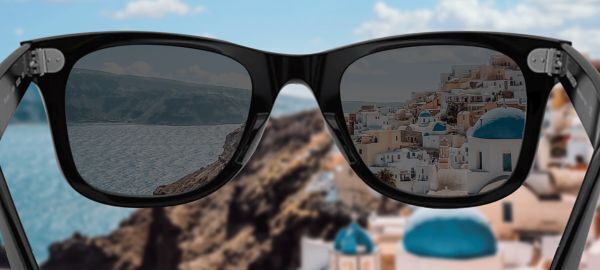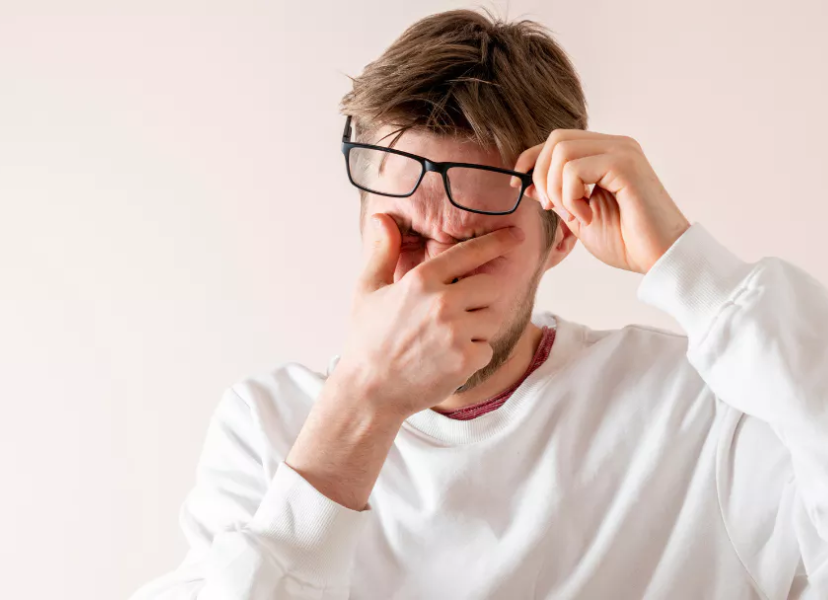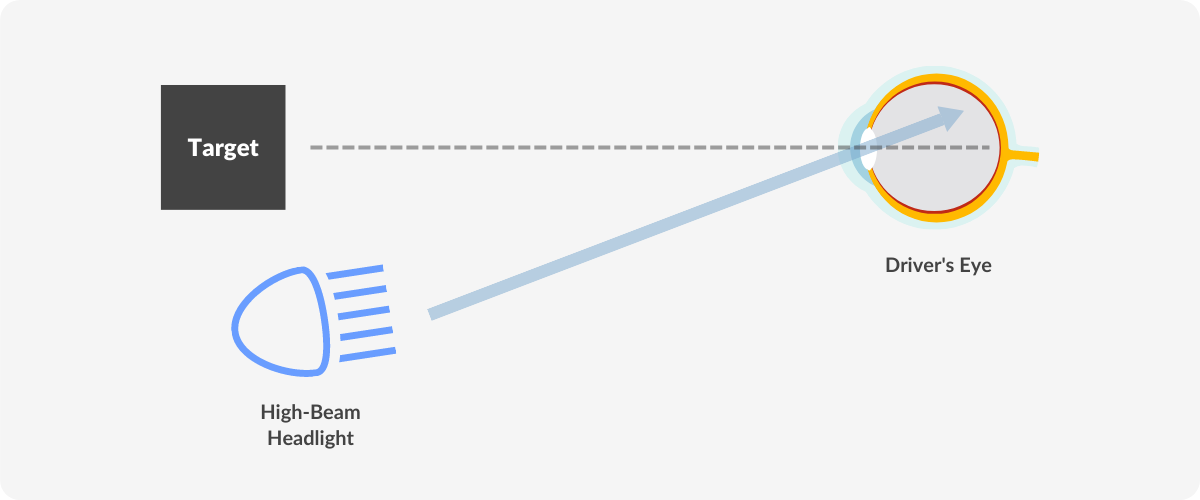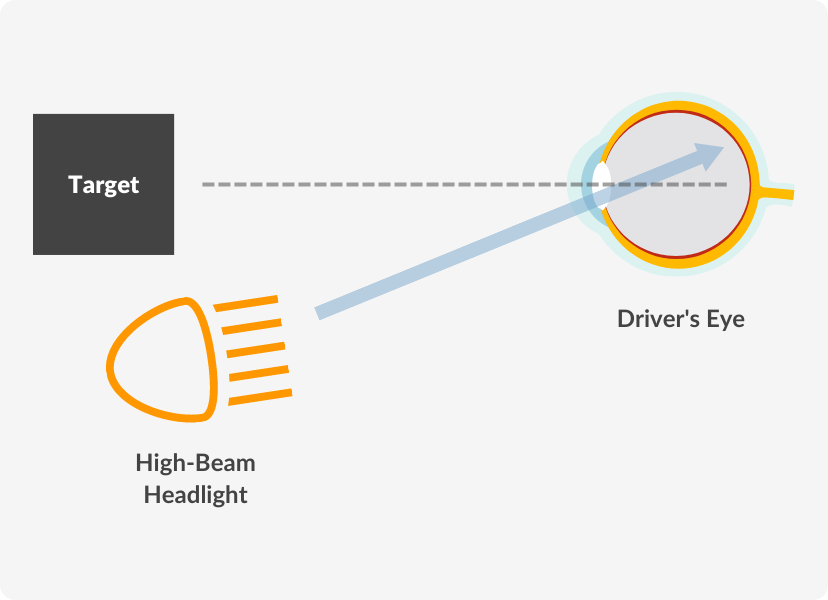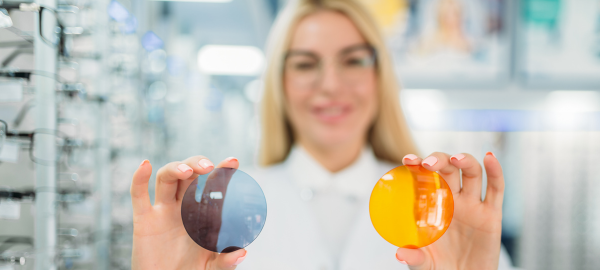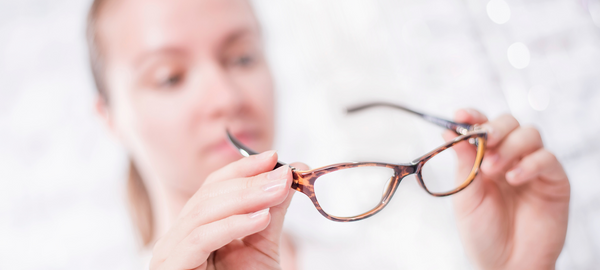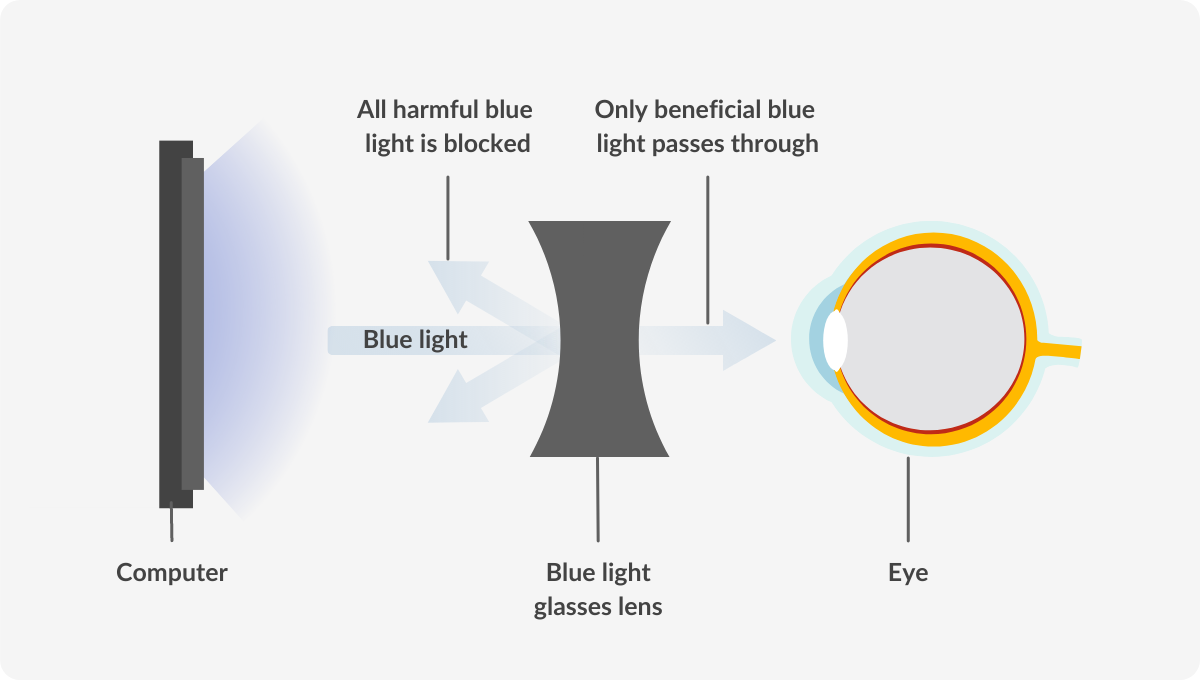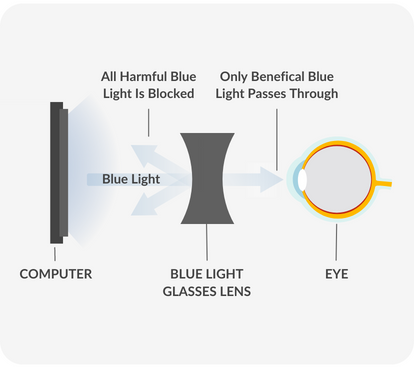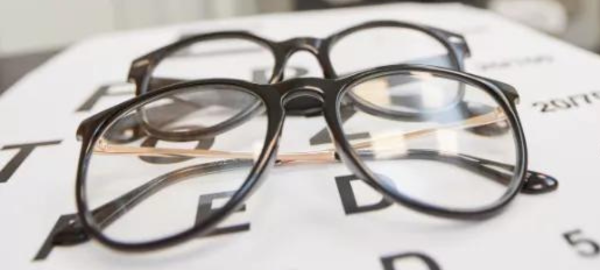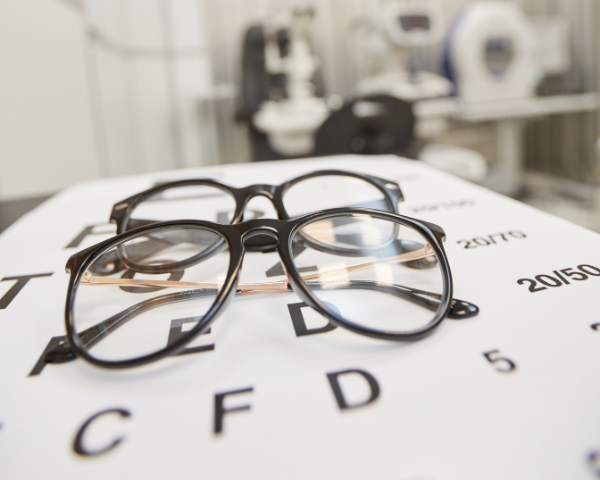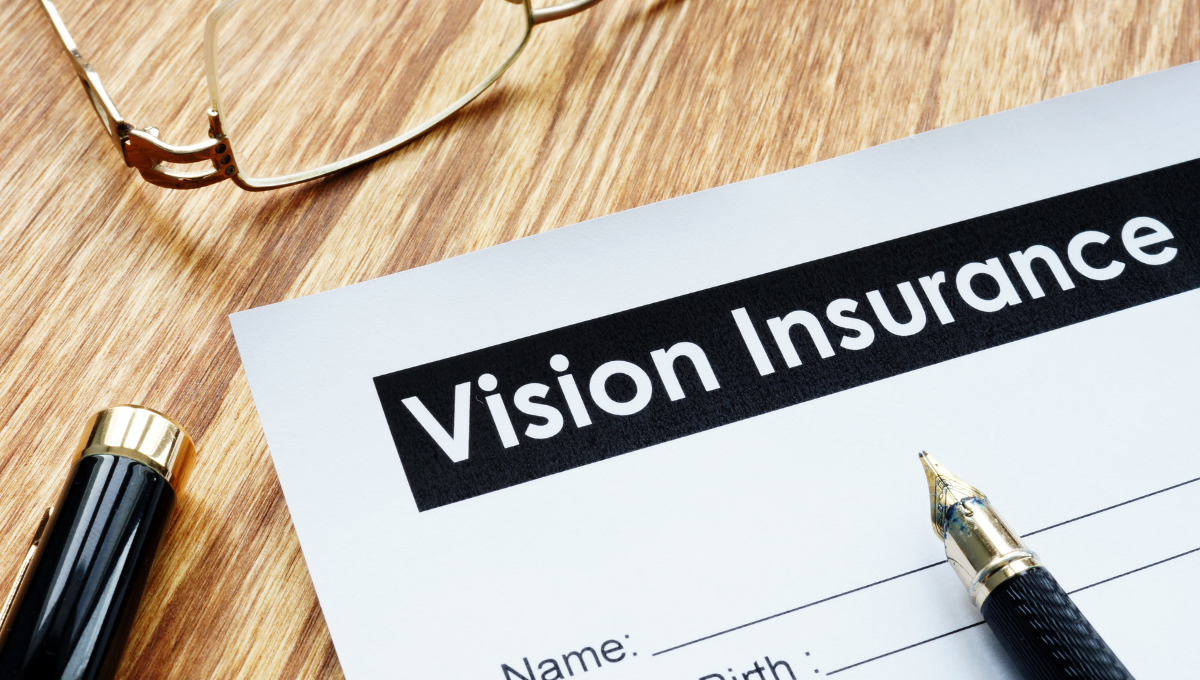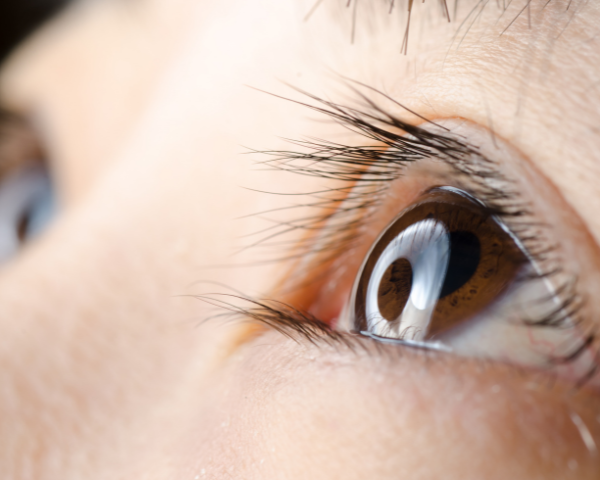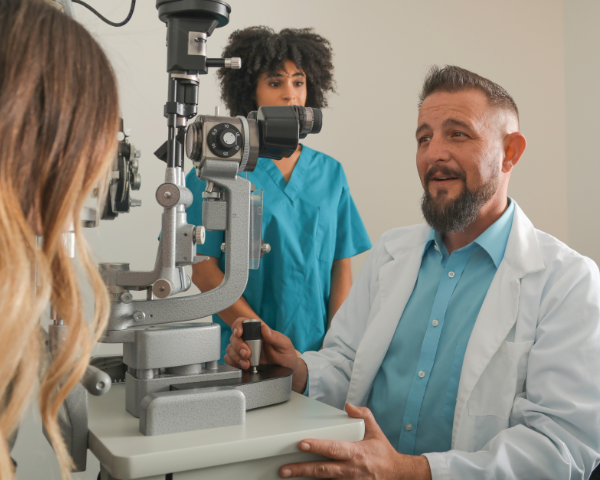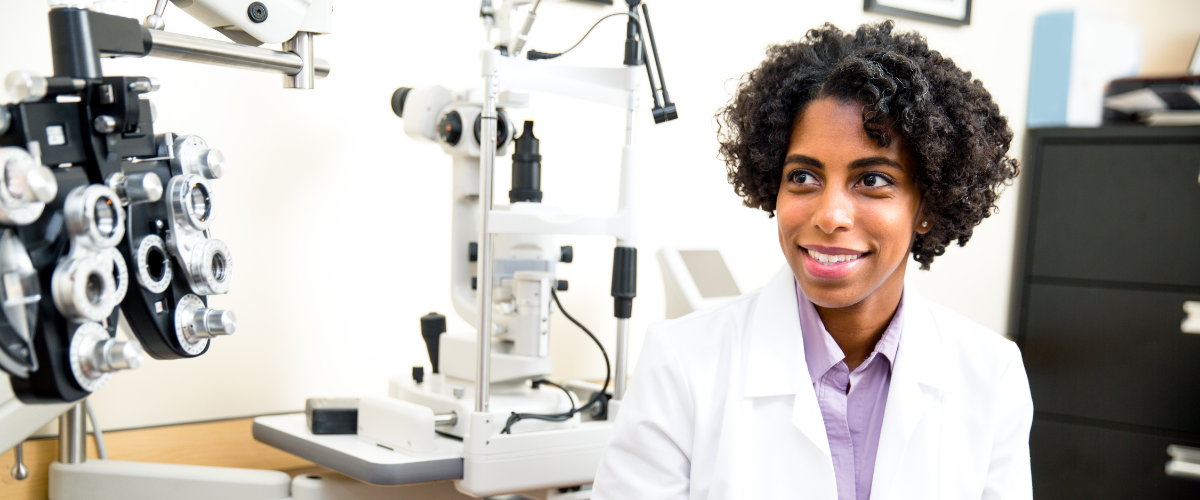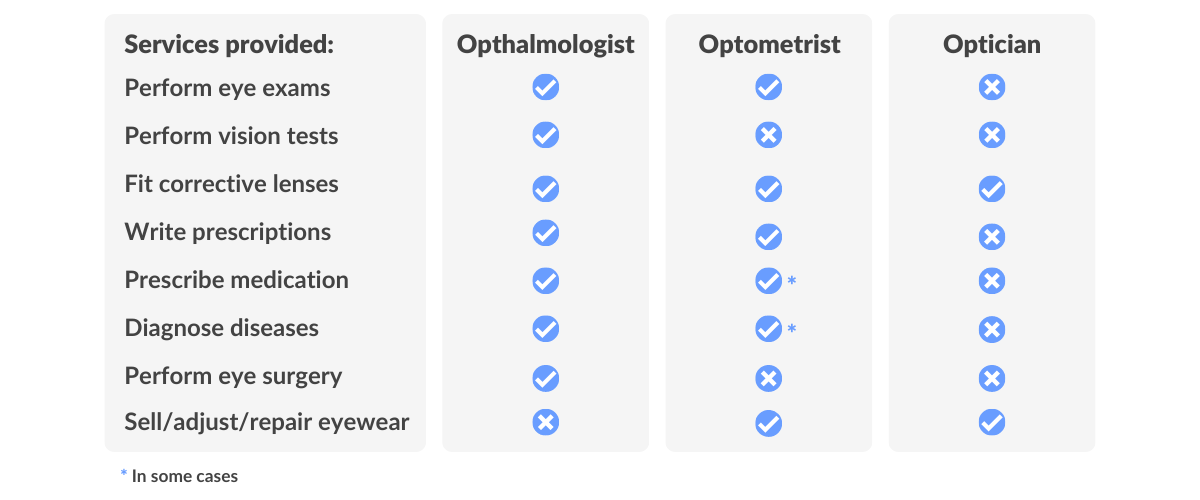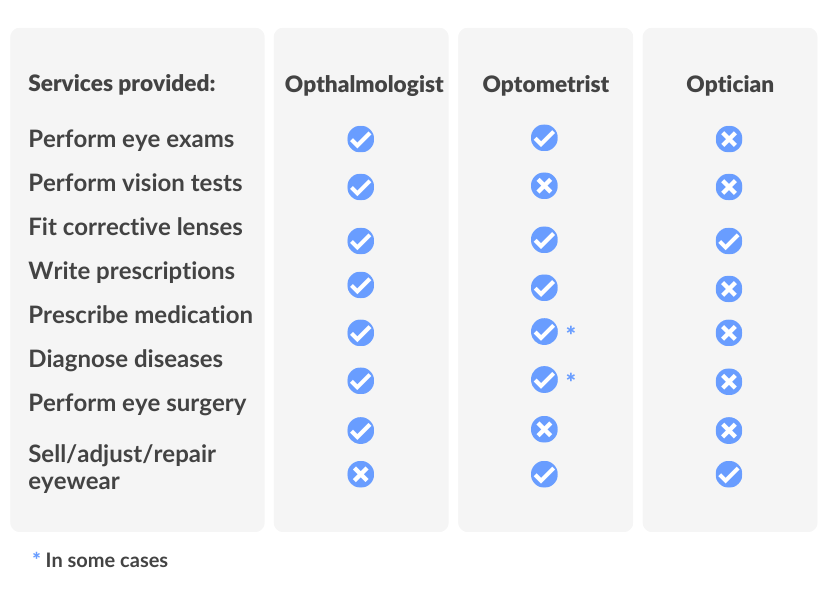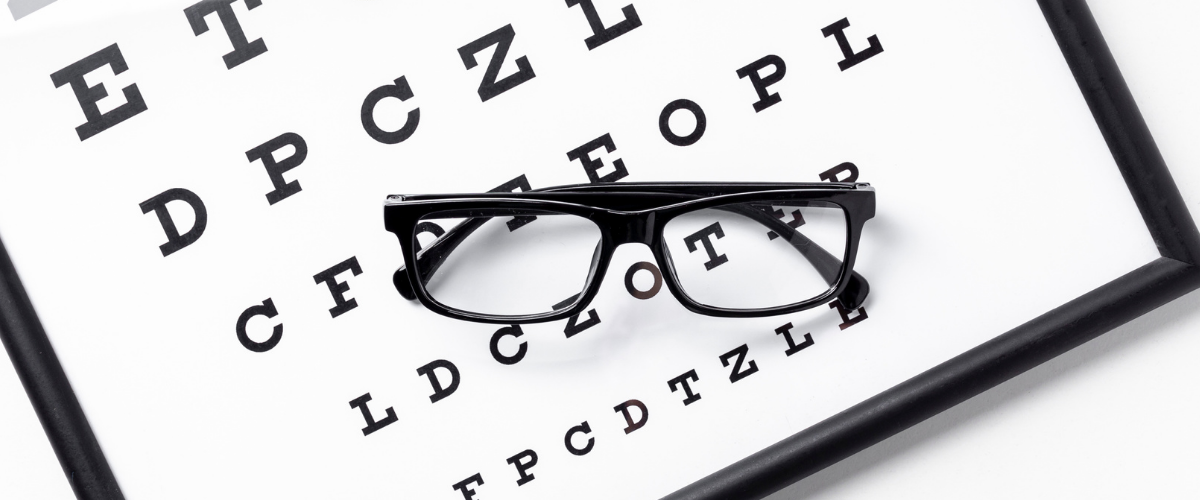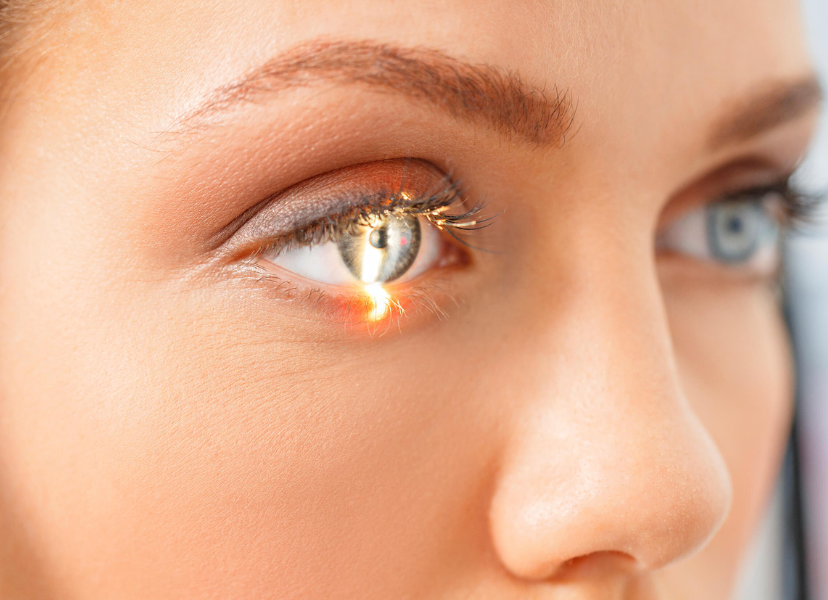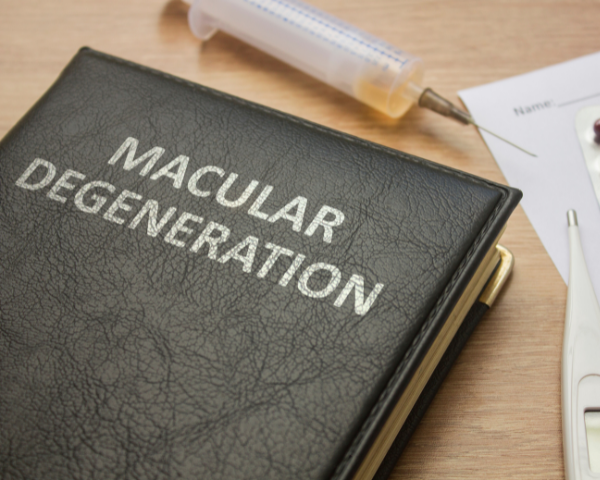What Are Prescription Sunglasses?
Are prescription sunglasses worth it?| How to order online | Cost | How to choose prescription sunglasses

Reviewed by
Caitlyn Gibiault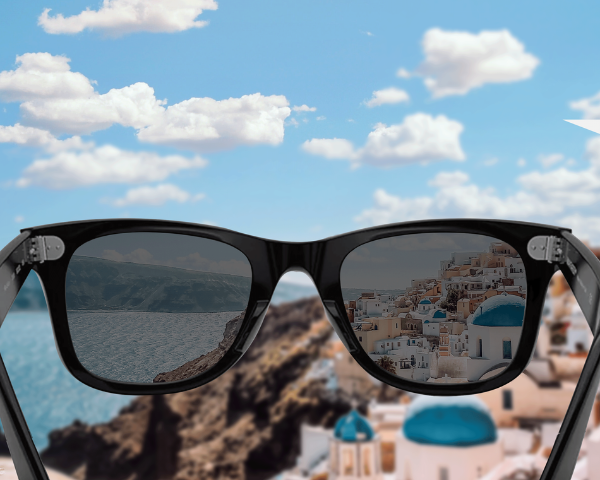
Are you constantly straining your eyes to see while wearing non-prescription sunglasses outside? If you wear prescription glasses every day, it’s time to invest in a pair of prescription sunglasses to wear outdoors. Prescription shades will give you the best of both worlds: clear vision and protected eyes.
Indeed, in addition to protecting your eyes from the sun’s UV rays, prescription sunglasses will help you see, reduce eye strain, and help avoid squinting. Continue reading to learn more about what rx sunglasses are, their benefits, how to add your prescription online, and how to choose the best pair.
People who need prescription lenses sometimes still wear non-prescription sunglasses. Doing so can result in eye strain, headache, and frustration from being unable to see clearly in the sun. These irritating symptoms are far from ideal when combined with the sun, sea, sand, and sunscreen.
With prescription lens sunglasses, you can sunbathe, hike, and easily play outdoor sports. Sunglasses are available with prescriptions for nearsightedness, farsightedness, or astigmatism. You can also get sunglasses with progressive lenses.
Are prescription sunglasses worth it?
Your everyday lifestyle in the sun will transform once you invest in prescription sunglasses. Here is why:
- They provide clear and protected vision on sunny days
- They ensure you are not straining your eyes outside to avoid future eye issues
- No need to carry around two pairs of glasses wherever you go
- More comfortable than wearing contact lenses and sunglasses
How to order prescription sunglasses online
We recommend booking an appointment with your eye care provider for an up-to-date prescription before ordering your prescription lens sunglasses. However, if you have your RX details but they’re misplaced, try our Lens Scanner free app to find them in minutes.
Unlike contact lenses, your prescription will not differ for your eyeglasses and sunglasses. Once you have your prescription, you must follow these steps at SmartBuyGlasses:

At the customization stage, you can tailor the sunglasses lenses with options such as anti-reflective lenses that are UV400 protected. You can also choose popular mirrored prescription sunglasses or polarization lenses for your sunglasses. For more information, see the section ‘how to choose your prescription sunglasses’ later in this article.
How much do prescription sunglasses cost?
Sunglasses with a prescription cost a bit more than non-prescription sunglasses since your specific prescription needs to be built into the lenses. However, in-store prescription lens sunglasses are often more expensive than buying them online.
How to choose prescription sunglasses
Firstly, choose the frame model you like. Read our short guide for some tips to determine what frame shape will suit you. You can also use our revolutionary Virtual Try-On tool to wear your chosen frames digitally before you buy!
Sunglasses with prescription lenses can be made with various materials, including high-index lenses, polycarbonate lenses, CR-39 plastic lenses, trivex lenses, and even glass lenses. When selecting prescription lenses for your sunnies, there are several types of lenses to consider.
DID YOU KNOW?
Photochromic prescription lenses
A photochromic tint will give your lenses a transition effect – which means they will automatically adjust to changes in ambient light conditions. This means they darken in the sun and become clearer indoors, which is ideal if you do not want to carry multiple pairs of glasses.

Polarized prescription sunglasses
Polarized sunglasses greatly eliminate glare to improve visual comfort and reduce eye fatigue. This lens is ideal if you spend time near water, snow, driving, and playing outdoor sports.

Color-matching Lenses
By choosing this option, our manufacturers will match your prescription lenses to the same color as the original sunglasses’ lenses. These lenses will still offer you UV protection and ensure you look trendy!
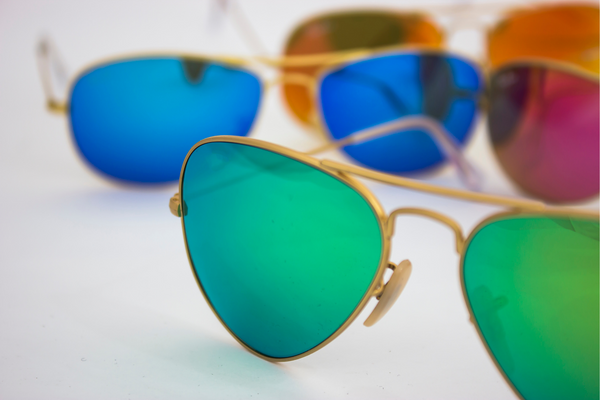
Mirrored prescription sunglasses
Opting for mirrored prescription sunglasses is ideal for fashion-conscious wearers. The lenses have a mirrored coating that helps to reflect light away from your eyes more than any regular tinted sunglasses.

We recommend contacting your optician to ensure you have the correct and updated prescription before you start shopping. Plus, if you still have some questions about prescription sunglasses, you can talk with one of the certified online opticians at SmartBuyGlasses.
Related articles
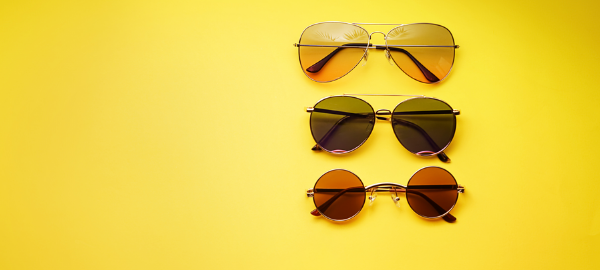

Related articles


What Are Prescription Sunglasses?
Are prescription sunglasses worth it? | How to order online | Cost | How to choose prescription sunglasses

Reviewed by
Caitlyn Gibiault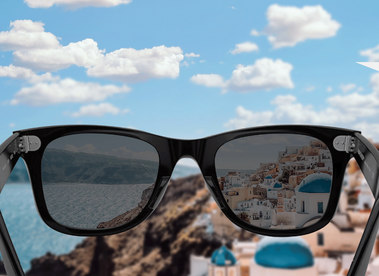
Are you constantly straining your eyes to see while wearing non-prescription sunglasses outside? If you wear prescription glasses every day, it’s time to invest in a pair of prescription sunglasses to wear outdoors. Prescription shades will give you the best of both worlds: clear vision and protected eyes.
Indeed, in addition to protecting your eyes from the sun’s UV rays, prescription sunglasses will help you see, reduce eye strain, and help avoid squinting. Continue reading to learn more about what rx sunglasses are, their benefits, how to add your prescription online, and how to choose the best pair.
People who need prescription lenses sometimes still wear non-prescription sunglasses. Doing so can result in eye strain, headache, and frustration from being unable to see clearly in the sun. These irritating symptoms are far from ideal when combined with the sun, sea, sand, and sunscreen.
With prescription lens sunglasses, you can sunbathe, hike, and easily play outdoor sports. Sunglasses are available with prescriptions for nearsightedness, farsightedness, or astigmatism. You can also get sunglasses with progressive lenses.
Are prescription sunglasses worth it?
- They provide clear and protected vision on sunny days
- They ensure you are not straining your eyes outside to avoid future eye issues
- No need to carry around two pairs of glasses wherever you go
- More comfortable than wearing contact lenses and sunglasses
How to order prescription sunglasses online
We recommend booking an appointment with your eye care provider for an up-to-date prescription before ordering your prescription lens sunglasses.
However, if you have your current Rx details prescription but they’re misplaced, try our Lens Scanner free app to reveal them in minutes. Unlike contact lenses, your prescription will not differ for your eyeglasses and sunglasses. Once you have your prescription, you must follow these steps at SmartBuyGlasses:
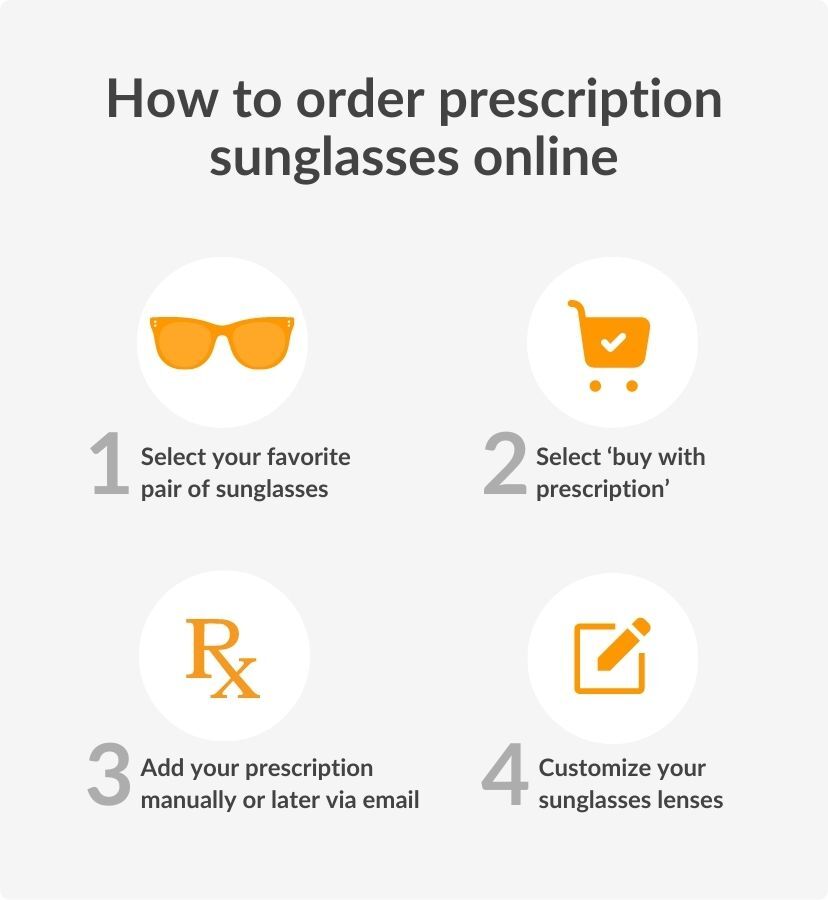
At the customization stage, you can tailor the sunglasses lenses with options such as anti-reflective lenses that are UV400 protected. You can also choose popular mirrored prescription sunglasses or polarization lenses for your sunglasses. For more information, see the section ‘how to choose your prescription sunglasses’ later in this article.
How much do prescription sunglasses cost?
Sunglasses with a prescription cost a bit more than non-prescription sunglasses since your specific prescription needs to be built into the lenses.
However, in-store prescription lens sunglasses are often more expensive than buying them online.
How to order prescription sunglasses online
Firstly, choose the frame model you like. Read our short guide for some tips to determine what frame shape will suit you. You can also use our revolutionary Virtual Try-On tool to wear your chosen frames digitally before you buy!
Sunglasses with prescription lenses can be made with various materials, including high-index lenses, polycarbonate lenses, CR-39 plastic lenses, trivex lenses, and even glass lenses. When selecting prescription lenses for your sunnies, there are several types of lenses to consider.
DID YOU KNOW?
Photochromic prescription lenses
A photochromic tint will give your lenses a transition effect – which means they will automatically adjust to changes in ambient light conditions. This means they darken in the sun and become clearer indoors, which is ideal if you do not want to carry multiple pairs of glasses.

Polarized prescription sunglasses
Polarized sunglasses greatly eliminate glare to improve visual comfort and reduce eye fatigue. This lens is ideal if you spend time near water, snow, driving, and playing outdoor sports.

Color-matching lenses
By choosing this option, our manufacturers will match your prescription lenses to the same color as the original sunglasses’ lenses. These lenses will still offer you UV protection and ensure you look trendy!

Mirrored prescription sunglasses
Opting for mirrored prescription sunglasses is ideal for fashion-conscious wearers. The lenses have a mirrored coating that helps to reflect light away from your eyes more than any regular tinted sunglasses.

We recommend contacting your optician to ensure you have the correct and updated prescription before you start shopping. Plus, if you still have some questions about prescription sunglasses, you can talk with one of the certified online opticians at SmartBuyGlasses.
Related articles


Related articles









































